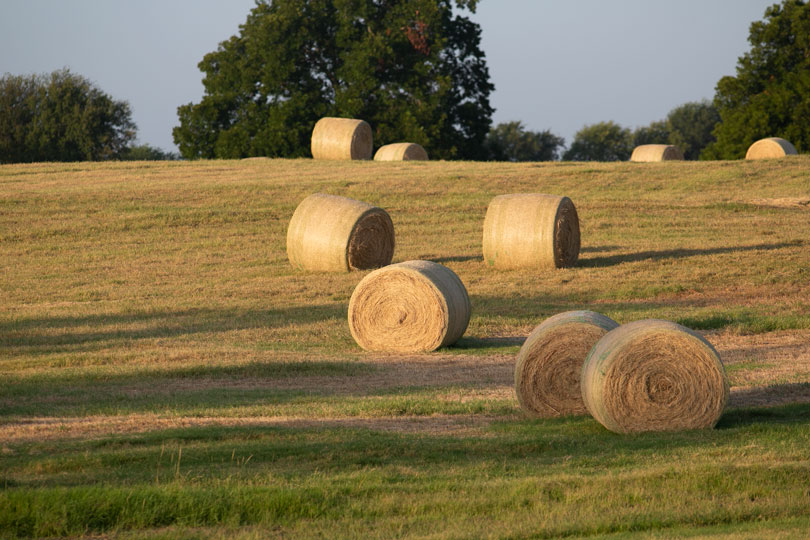By Jennifer Dorsett
Field Editor
Reducing hay loss during storage is key to productivity and efficiency.
But which storage system is the best?
“Generally, the value of a storage system depends on the projected hay loss while in storage and the price of hay when sold or used,” Wendie Powell, Kansas State University Extension livestock production agent, wrote in Drovers.“If hay with a market price of $80 per ton has a 20 percent loss during storage, then the value of the hay lost would be $16 per ton. This cost of hay value lost added to the cost of the storage system, like an enclosed barn, gives the total storage cost, which can be used to compare various types of storages.”
One of the main problems in determining the total storage cost of a system is estimating the loss of hay value during storage, Powell noted.
Dry matter losses are dependent on initial bale quality, storage conditions and length of time in storage, and they can reach 50 percent. Powell said severe deterioration is usually confined to the outside two to eight inches of the bale. But, depending on the bale’s diameter, just two inches could represent over 10 percent of the bale’s dry matter.
“The depth of weathering depends on many factors, including amount of rainfall and environmental conditions, like temperature and humidity, during the storage period, the hay type and condition when baled, and bale shape and density,” Powell said.
To prevent excessive loss, Powell said bales should be well-shaped and as dense as possible. She noted one of the keys to reducing weathering is the tightness of the outer layer of the bale.
“The tighter the outer layer, the lower the losses, regardless of whether the bale was formed using a variable or fixed-chamber baler,” she said.
Density, or the tightness of the outer layer, is not easy to measure. Powell said a rule of thumb is to push on the outer surface of a newly-formed bale with the palm of your hand.
“If you can depress the surface more than about a half-inch, the bale could undergo significant storage losses when placed outside and unprotected,” she said.
Sisal or plastic twine wraps should preferably be six inches but no greater than eight inches apart on the bale. Powell said this practice does add additional time and expense during baling, but if the bales are to be stored outside, the added time and expense are easily justified.
She noted research shows net-wrapped bales have storage losses similar to the standard plastic or twine wrap when outer layers are about the same density.
Storage sites are another important consideration in reducing bale losses.
Powell advises storing round bales at a site out of the shade and open to breezes to enhance drying conditions. She said as much as 12 inches of the bottom of a bale can be lost through moisture absorption, so it’s important the area drains well.
“Ground contact can account for over half of the total dry matter losses,” she said. “So, where it’s practical, keep bales off the ground using low-cost, surplus materials such as discarded pallets, racks, fence posts, railroad ties or used tires.”
An alternative is to use a layer of crushed rock about six inches deep to ensure good drainage around the storage site.
Bales should be stored in rows, end-to-end. For maximum airflow and sunlight penetration, Powell recommends organizing rows in a north-south direction and allow at least three feet between each row. Vegetation between rows should be cut or mowed.
Research shows orientation of rows is a minor consideration if the round bales are going to be used before early spring, because dry matter losses are relatively small until that time. However, if bales are stored into the summer, those facing an east-west direction can experience severe deterioration on the north-facing surface.
“It all comes down to the value of the hay loss in storage,” Powell said. “Ideally, the value of the lost hay would be recovered in material costs.”
Click here for more information on storing large round bales.

